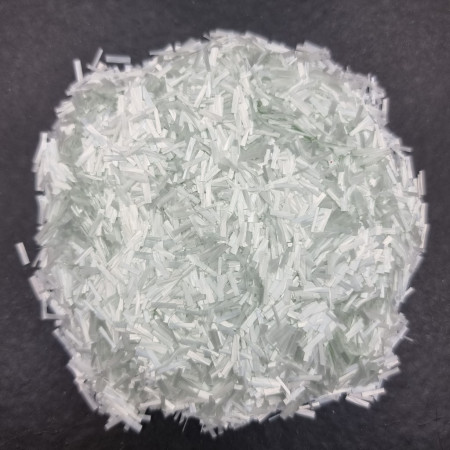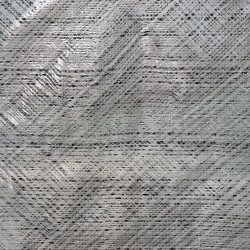
Glass Flakes (Each flake is 6mm long.)
Glass Flakes
Availability:
- 6mm Length Glass Flakes that are used to strengthen Acrylic Resin.
- Usually added to resin that is placed in the corners of castings.
When and How to Reinforce Acrylic Resin
The cured resin surface is hard but can be a little brittle (can break if dropped) and is not very good at supporting load on its own.
When making simple castings such as coasters with Acrylic Resin, no reinforcing is required.
When making load bearing castings such as a tray or tabletop, or when using the resin for laminating purposes then it is necessary to add reinforcement to the resin. There is no specific rule as to exactly when to use reinforcing in castings but the thinner the casting and the higher the load it must carry, the more necessary it is to add reinforcement.
Be aware that you always only have about 15 minutes working time with this resin, so everything needs to be organised and prepared before you start. Use an additional person where required.
There are two ways to reinforce Acrylic Resin
Triaxial Fabric
Glass Flakes
While these flakes can be used in resin that is poured on flat surfaces, they are particularly useful to reinforce corners. The Triaxial Fabric is not sufficient in corners on its own as when pressed into one corner it pulls away from the opposite corner. For this reason, a Glass Flake/Resin mix is placed into the corners and the Triaxial Fabric is pushed into the mix.
Some Application Examples
Making a flat, load bearing casting e.g. casting a small tabletop in a mould (the casting will be removed from the mould so the resin tabletop has to bear load).
Casting a tray or other load bearing surface with sides.
Laminating a flat surface such as a wall
Important point when using Glass Flakes
Unit Size |
|
| Unit Size |
500g
2kg
|





